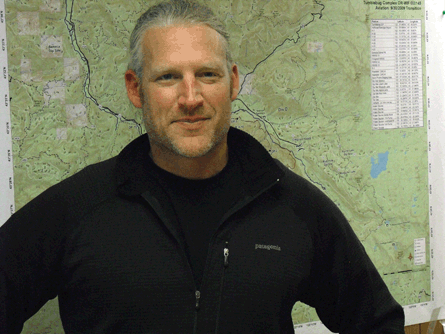What attracts aerial wildfire-fighters to the job? And what do they do in winter, when there are no blazes to tackle? Gary Munson, who captains the Krassel Helirappel Crew in Idaho, describes life on the fireline
Whether rappelling from a helicopter or leading operations of temporary US Forest Service helibases, Gary Munson is constantly following and fighting wildfires.
What is your main job, and which other agencies do you work for?
My technical title is the captain on the Krassel Helirappel Crew in central Idaho. We are primarily an initial attack resource, which means that we fly to a new fire start and land or rappel people into the fire with 75m (250ft) ropes. I still get out on fires every now and again, but I am usually the spotter who puts the people on the fire. When I am not with my ship I serve secondary roles such as helibase manager or directing forces on the fireline.
 |
|---|
Although we work for the Forest Service, we are able to assist all federal, state, and local agencies with their emergencies - mainly fires.
How did you get where you're at today?
My best friend got me in to firefighting while I was in college. After I received my bachelors of science degree in geology, I made a decision to stick with the Forest Service. The fire world can be very addictive. My first job in aviation was at Krassel. I have been there for 10 years.
As a firefighter, are you exempt from the recession?
The US government is trying to tighten its belt wherever it can. We are constantly asked to do more with less.
What do you do over winter and spring before fires start?
My primary job over the winter and spring is to treat my wife like a queen for being gone all summer. There is quite a bit of behind-the-scenes training and preparation that goes on.
I not only take classes, but also serve as an instructor for aviation classes. In my spare time I do about every winter activity possible.
Are there certain days or fires when work gets stressful?
Definitely. Especially in multiple new fire start situations, where we deal with things like jammed communications, changing wind conditions and urban interface. I cannot tell you how many times I have had to do an emergency evacuation with our helicopter of hikers or hunters who get trapped in front of the head of the fire. It is tough to tell someone to grab their valuables out of their truck because it will be burnt up in about 10 minutes. We have to be perfect. Mistakes can cause lives.
What's the hardest part of coordinating a helibase?
Running a helibase is about risk assessment and logistical management. There are times when it is so busy you can go through a whole day before you realise that you have not eaten a bite.
Is it ever difficult getting fuel and supplies to remote bases?
Yes. You have to plan ahead and take advantage of holes in the smoke and the weather.
What's the strangest place you've set up a helibase at?
Finding a good location can be tough. We have to be creative. As long as we have a clean flight route in and out that does not overfly the public, we are good. In Sweet Home, Oregon we set up a base next to a subdivision of houses. We probably gave tours of the helicopters to 75 people a day. For most of those people it will be the only chance they ever get to do that.
Source: Flight International























